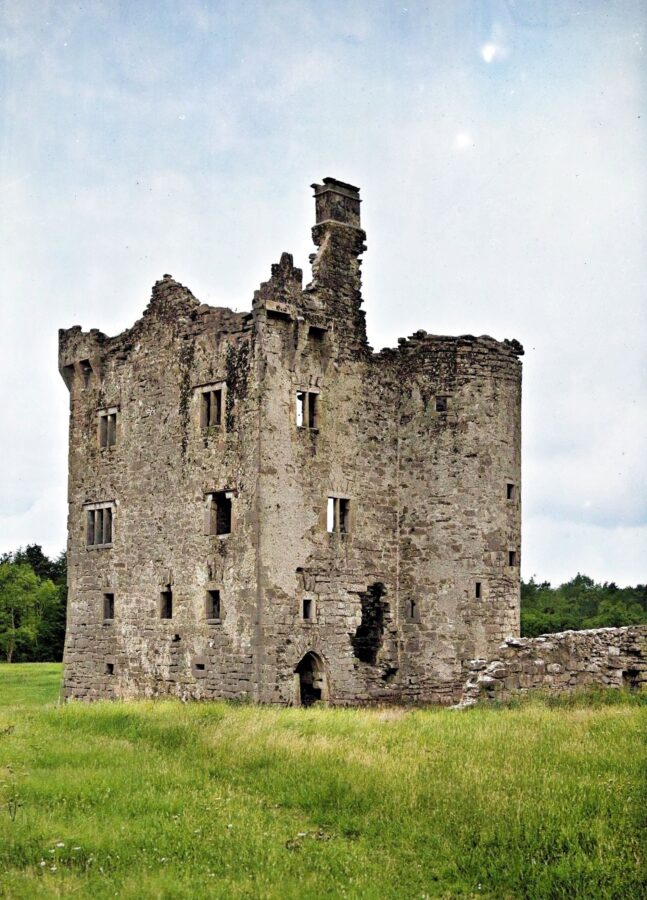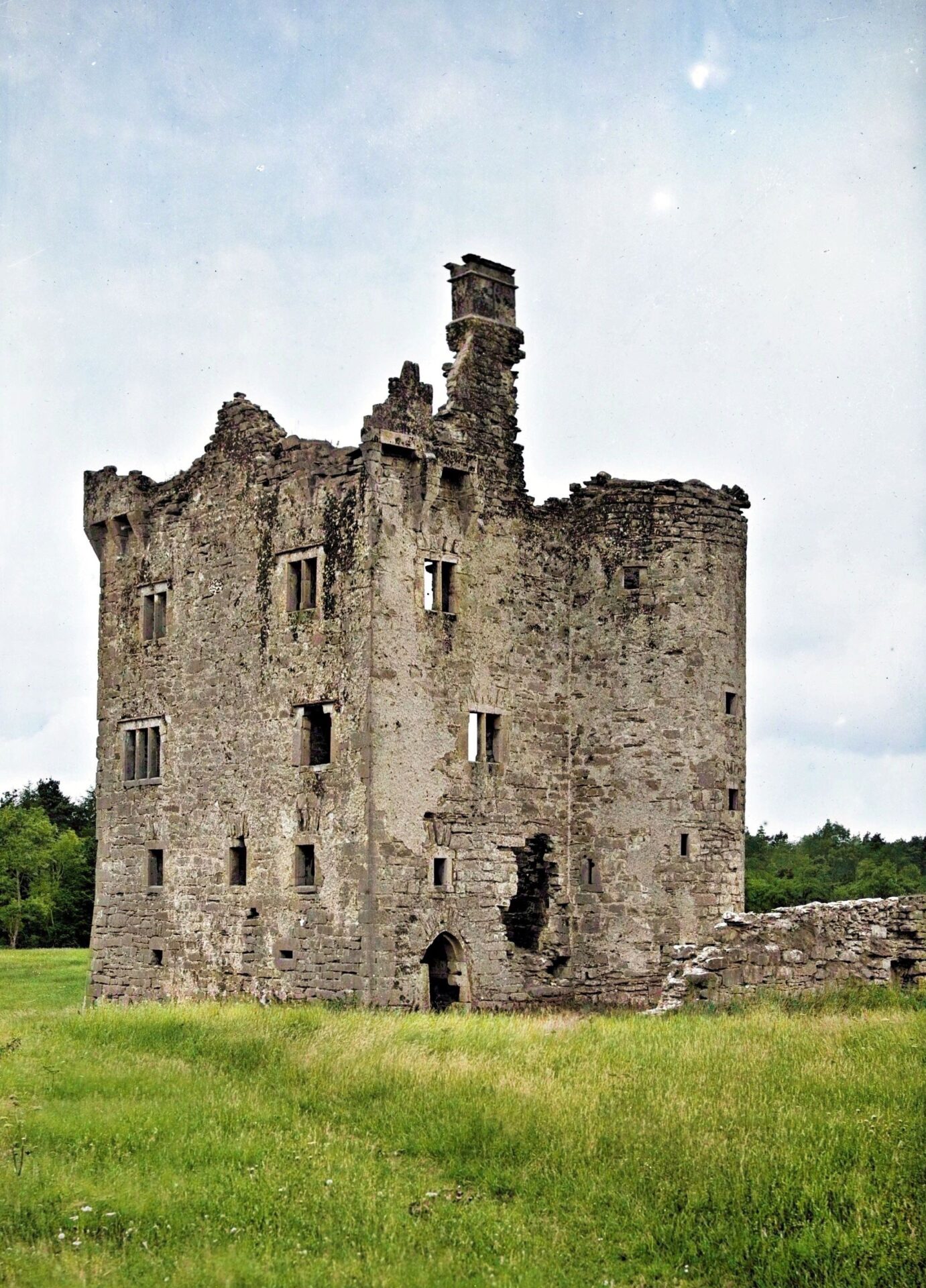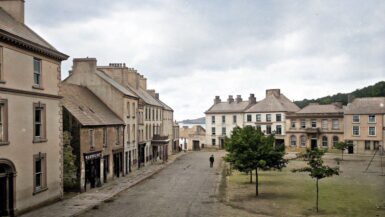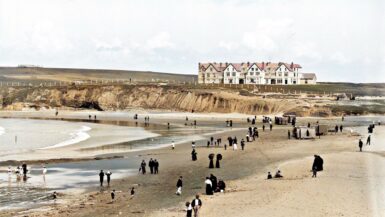Nestled on the picturesque northwest shore of Lower Lough Erne, McGrath Castle stands as a monument to the storied past of the Clan McGrath. Situated within the modern boundaries of County Donegal and merely a mile from the village of Pettigo, this Ulster castle encapsulates the rich history and architectural evolution characteristic of the Elizabethan era in Ireland. Its military and domestic features, from the fashioned gun loops to the ornate window frames, serve not only as a testament to the clan’s influence but also as a marker of the transitional period in warfare and architecture during the mid-16th century.
Architectural Marvel of the Elizabethan Era
The construction of McGrath Castle commenced in the late 16th century, a project initiated by James McGrath, the then Chief of the Termon and son of Archbishop Miler McGrath. This period marked a significant evolution in military architecture, reflecting the gradual shift from blade-based combat to gunpowder warfare. The castle’s lower ground floor, adorned with fashioned gun loops, exemplifies this transition, showcasing the adaptability and innovation in defensive structures to accommodate the changing dynamics of warfare.
The upper floors of the castle are equally impressive, featuring ornate window frames that not only provided light and ventilation but also added to the aesthetic appeal of the structure. These architectural elements highlight the dual function of McGrath Castle as both a military fortification and a residence of status, mirroring the power and prestige of the Clan McGrath in the region.
Symbol of Status and Power
The erection of McGrath Castle was not merely an architectural venture but a symbol of the clan’s status and power in Ulster. As hereditary Corabs or Termoners of Lough Derg, the Clan McGrath wielded significant influence, a position recognized and reinforced by the grants and titles bestowed by Queen Elizabeth I and later reaffirmed by King James I. The construction of such an imposing fortification was both a necessity and a statement, serving as a physical manifestation of the clan’s authority and their esteemed role within the societal hierarchy of the time.
The Castle in Conflict: The Irish Confederate Wars
The strategic importance and symbolic value of McGrath Castle made it a focal point during the tumultuous power struggles of the early and mid-17th century, particularly during the Irish Confederate Wars (1641-1653). The clan’s decision to side with the rebels in 1641 placed them directly in the path of conflict, leading to a siege by the northern militia known as the Lagganers. The ensuing destruction marked a significant turning point in the history of both the castle and the Clan McGrath. The rebellion and subsequent Cromwellian campaign in Ireland led to the confiscation of the clan’s lands, effectively signaling the end of their dominion and the beginning of a new chapter in the castle’s history.
McGrath Castle Today: A Legacy Preserved
Today, McGrath Castle stands on private land, yet remains accessible to the public, offering a tangible connection to Ireland’s rich historical tapestry. Despite the ravages of time and conflict, the castle continues to captivate visitors with its architectural splendor and historical significance. It serves as a poignant reminder of the Clan McGrath’s once formidable presence in the region, embodying the resilience and enduring legacy of one of Ireland’s most influential families.







Leave a reply